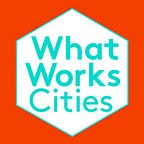Reimagining What Works: Providence’s Culture of Innovation
By Sharman Stein and Kristin Taylor
Sometimes it seems that “innovation” is used so frequently that it has become a cliche that eludes real definition. But when we asked for a definition from Ivan Monzon-Natareno, a Data Integration Programmer with Providence’s Department of Innovation, his answer was anything but routine: “Innovation is overcoming the friction of comfort that sometimes comes with city government,” he said. Monzon-Natareno’s definition fits the work underway in his department, a relatively new team that was born out of Mayor Jorge O. Elorza’s commitment to using data and innovative techniques to solve local government challenges.
Headed by Chief Innovation and Performance Officer Emmanuel R. Echevarria, the team has trained some 250 city employees to bridge the gaps between staff, city programs, and the data-based systems that can improve life for Providence residents. Using biweekly “Stock Take” sessions, the innovation team helps departments think through their data needs and issues and identify areas for collaboration and improvement that lead to consistency of information, efficiencies, and transparency, benefiting city managers and the public. Echevarria and Monzon-Natareno also worked with What Works Cities partner the Sunlight Foundation to develop an open data resolution, which City Council passed the day after our visit. The team has been identifying data sets that can be published on the City’s open data portal.
Among the Department’s recent accomplishments has been moving two previously arduous processes online: applying for business licenses and building permits, streamlining the processes and eliminating the need for applicants to wait on long lines at City Hall. Sometimes, if an inspector wasn’t available to approve a permit, disgruntled residents might end up with a parking ticket and still leave without the documents they came in for. Often, residents received different answers from different staff about the application processes, and complaints about the process were reaching the Mayor. “Small businesses are the economic engine of this city,” Echevarria says. “We want to help them thrive.”
It’s important for public safety, too — and for preventing blight, a city priority. Previously, residents interested in buying homes might find themselves looking through card catalogs to track the history of permits on a particular residence. The lack of a centralized system meant that important information like building violations or repairs made without a permit could slip through the cracks — as a result, uninformed homebuyers sometimes found themselves unable to keep up with the cost of repairs, leaving those properties at higher risk of becoming vacant or abandoned.
To begin tracking blight, Kevin Mahoney, Deputy Director of the Department of Inspection and Standards, tasked an inspector with driving around the city to identify blighted properties. Six hundred such properties have been identified; 150 have been eliminated. One particular success story stands out for Mahoney — two abandoned, dilapidated parcels that were demolished in 2016 after the City acquired them for tax foreclosure and identified grant funds for their revitalization. In their place, the City built a beautiful new park and green pathway for children to travel safely between the local elementary school and public library. Mahoney said he went to the opening of the new space and couldn’t believe what he was seeing. “I remember standing in the park thinking, ‘This is a different world.’”
Sharman Stein is the Director of Communications at What Works Cities, and Kristin Taylor is the initiative’s Senior Communications Manager. This week, they’re visiting several participating cities in the Northeast to show you more about how local governments are finding what works. Read more of their posts here.
